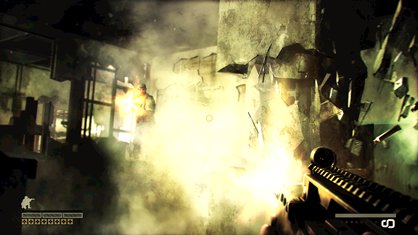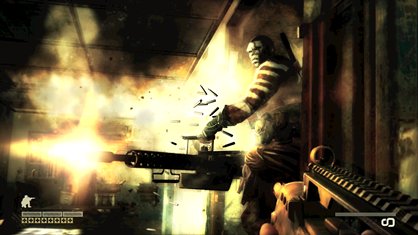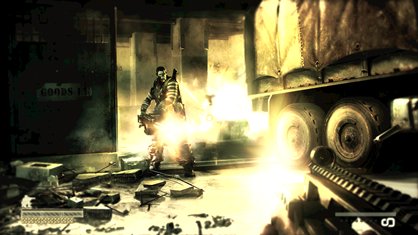More details on Bodycount
Possibly the most-destructive shooter yet yields hidden depths
Weapon management is more adaptable than COD. As Executive Producer Tom Gillo explains, “players can carry two main weapons. In addition they will always have a pistol (with optional silencer) with infinite ammo, and a limited number of slots for grenades and health which is expandable through Intel upgrades.”

True to its arcade roots, Bodycount has intrinsic reward and combo systems. Fallen enemies drop ‘intel’ – the game’s currency – used to buy new equipment, unlock new areas or call in air strikes. Shoot down a sequence of ranked enemies, and your combo gauge ignites, spawning even more intel. Enemy soldiers aren’t identical clones. Medics will rush out to patch up comrades, while Scavengers sneak around stealing useful items and intel (they can even call in air strikes against you).
It’s not a linear FPS experience, but divided into three acts – each set in a different country, with various zones and stages. You can play any unlocked area in the order you like, and revisit previous stages. In contrast to current open-world shooters, the stages are deliberately compact. Combatants are on top of each other all the time, and most of the firefights play out in 30m killzones, emphasising close combat.

The cover mechanic exploits the game’s environmental destruction. Press and hold p to crouch, and move the left analogue stick to peak around, and above, your cover without locking on to it. You’re able to pick out razor-sharp firing lines without exposing yourself. You can even shoot chunks out of whatever you’re hiding behind and fire through the hole. We had a great time spotting the objects that enemies were running for, then shattering their boltholes with bullets before the poor fools even arrived.
Visually, it’s brash, bright and highly stylised, but avoids the gimmick of cel-shading. Each act has a strong colour signature, reflecting the narrative’s themes. In the first act, focusing on corruption and pollution in an unnamed African state, there are greens and yellows everywhere, creating a sickly, woozy feel. Metal surfaces reflect the abundant dynamic light sources, providing a glittering iridescence, which contrasts with the flat, dusty patina of most modern shooters.
Further details are sketchy, but it looks like missions end with you gaining entry to the local Target headquarters. These cutting-edge buildings loom over the landscape like alien artifacts and will be nightmarishly difficult to enter. Once you’re in, though, the high-tech interiors are yours to destroy. “It’s all the fun of going into a Swarovski crystal shop and emptying an AK-47 into the display stands,” says Cant.

Naturally, there’s a vast range of souped-up weapons, and various multi-player deathmatch and co-op modes. Bodycount is ticking all the usual boxes on the FPS features list – it’s just that it’s then snapping the pen in half, burning up the paper and blasting holes in the clipboard.
Sign up to the GamesRadar+ Newsletter
Weekly digests, tales from the communities you love, and more
May 7, 2010
Keith Stuart is an experienced journalist and editor. While Keith's byline can often be found here at GamesRadar+, where he writes about video games and the business that surrounds them, you'll most often find his words on how gaming intersects with technology and digital culture over at The Guardian. He's also the author of best-selling and critically acclaimed books, such as 'A Boy Made of Blocks', 'Days of Wonder', and 'The Frequency of Us'.


